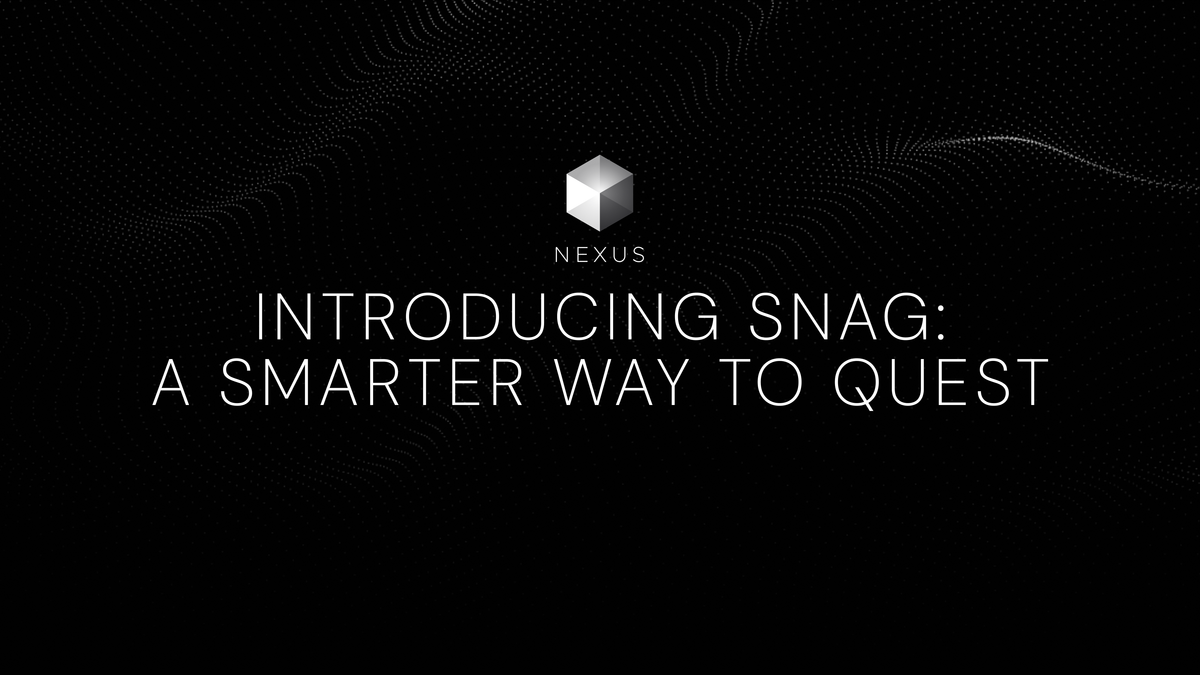Why Verifiability and Revenue Will Define the Next Era of Blockchain
In a recent interview with crypto commentator Aaron Bennett, Nexus founder and CEO Daniel Marin discussed the technical vision, architectural

As the Web3 space matures, projects are rethinking how to grow and sustain communities. In Episode 5 of Exponential, Zach Heerwagen, co-founder and CEO of Snag, joined us to explore how “questing” is emerging as a powerful mechanism for aligning users, incentives, and long-term network health.
Zach defines questing as Web3’s take on loyalty. In traditional business models, loyalty is mostly transactional — based on how much a customer spends.
In contrast, Web3 broadens the definition of meaningful engagement.
“Questing is really Web3’s term for loyalty,” Zach explained. “There are three core contribution types: financial, social, and time-based.”
That means rewards can be tied not just to token purchases or NFT mints, but also to social engagement or participation in network activities like compute contribution — something Nexus is actively building toward.

Heerwagen traced the evolution of this model back to the early airdrop era, pointing to the Uniswap drop as a turning point.
While it successfully distributed value and sparked engagement, it also introduced new challenges: Sybil behavior, shallow incentives, and user farming. Projects today are looking for more durable ways to identify and reward genuine participants.
That’s where questing and points programs come in. Zach emphasized their flexibility and strategic depth, noting that they enable teams to treat token allocations as a form of marketing spend. “You can quantify the relative impact of different contributions and how they ladder to the percentage allocation of an upcoming token,” he said. This allows builders to reward what truly matters — and filter out noise.
“Point programs let you pre-spend social capital, even before a token exists.”
To illustrate the power of this approach, Zach highlighted two contrasting examples from the NFT space.
Blur grew rapidly by financializing participation — first incentivizing buy-side activity, then shifting to sell-side behavior. That helped them dominate NFT trading volume. But a year later, OpenSea reclaimed market share using a very different strategy: fun, lightweight quests with low financial stakes. Both succeeded, but in different ways —by designing their programs to match their target user base.
“The flexibility of these programs enables highly customized growth strategies that map to traditional marketing launches.”
Looking ahead, he sees a shift back toward rewarding financial contributions, especially as the limits of social-fi and influencer marketing become clearer.
“We’re already seeing a reversion,” he said. “Projects will start requiring asset ownership or financial participation as a prerequisite to earn through marketing.” In short, Web3 growth is converging on a more balanced model — blending distribution with economic skin in the game
Heerwagen’s own ideal questing scenario blends Web3 principles with real-world brands. He imagines a DoorDash-like interface where customers build loyalty not just by placing orders, but also by scanning in-store QR codes or following their favorite restaurants on social media.
“It’s about pulling users closer to creators, businesses, and ecosystems,” he said.
That kind of loyalty design, rooted in verifiable, multi-dimensional contributions, could unlock entirely new forms of engagement.
At Snag, he’s optimistic about what’s next. “We feel like we’ve built the best growth product for Web3 brands,” he said.
“And now we’re entering an era where more of those brands actually have product-market fit.” As use cases like stablecoins and tokenized assets gain traction, the appetite for authentic community growth is only accelerating.
At Nexus, we’re already putting these ideas into practice.
Our questing tools are designed to reward a spectrum of verifiable contributions — compute, community, and beyond. This isn’t just a feature set. It’s a new way to build networks that value participation as much as performance.